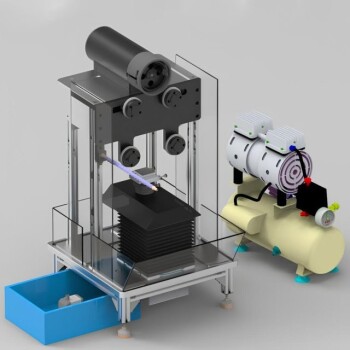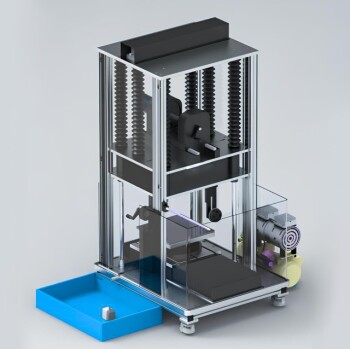MPCVD stands for Microwave Plasma Chemical Vapor Deposition. It is a method of growing high quality diamond films in laboratory by using a carbon-containing gas and a microwave plasma.
Toggle Categories
Get Instant Support
Choose your preferred way to connect with our team
-
Get Free Quote Fill out form for detailed pricing
-
Send Email Detailed inquiry support
-
WhatsApp Quick mobile chat
Response Time
Within 8 hours on working days, 24 hours on holidays
MPCVD

HFCVD Machine System Equipment for Drawing Die Nano-Diamond Coating
Item Number : MP-CVD-100

915MHz MPCVD Diamond Machine Microwave Plasma Chemical Vapor Deposition System Reactor
Item Number : MP-CVD-101
MPCVD machine, short for Microwave Plasma Chemical Vapor Deposition, is a laboratory equipment used for the deposition of thin diamond films onto a substrate surface. The machine works by generating microwaves in the range of 2.45 GHz through a magnetron or klystron, which are then coupled to a vacuum chamber through a quartz window. The gas delivery system, which consists of mass flow controllers, controls the flow of gas into the vacuum chamber, allowing for the growth of high-quality diamond films. The MPCVD machine is advantageous for large-sized diamond growth and is used extensively in the semiconductor and diamond cutting industries.
Applications
MPCVD is a promising technique that shows potential for producing large, high-quality diamonds at a lower cost. Diamond is highly valued for its unique properties, such as its hardness, stiffness, high thermal conductivity, low thermal expansion, radiation-hardness, and chemical inertness. However, the high cost, limited size, and difficulty controlling impurities of natural and synthetic high-pressure, high-temperature diamonds have restricted their practical applications.
MPCVD diamond also offers several advantages over natural and high-pressure, high-temperature synthetic diamonds. It is more affordable and easier to produce, making it accessible to a wider range of industries. Additionally, its high purity and size consistency make it suitable for use in electronics, optics, and other advanced technologies.
- Production of high-quality diamond films used in the semiconductor industry for large-size diamond substrates
- Production of diamond cutting or drilling tools utilized in various industries such as mining, oil and gas, and construction
- Growth of diamond gemstones used in the jewelry industry
- Creation of superconducting diamonds through the introduction of boron dopants
- Production of nitrogen vacancies in the carbon structure for interesting photo-luminescence properties used in quantum information systems
- Deposition of thin films on substrate surfaces in various industries.
Advantages of MPCVD Machine
- Produces higher purity diamonds compared to HPHT method
- Consumes less energy during the production process
- Facilitates the production of larger diamonds
- Exceptional stability, reliability, repeatability, and cost-effectiveness
- 1-10Kw adjustable output microwave power for less electricity consumption
- Rich experienced researching team with frontier diamond growing recipe support
- Exclusive technical support program for Zero diamond growing experience team
- Provides a smooth and continuous adjustment of microwave power and stable control of the reaction temperature
- Avoids diamond contamination by hot wires
- Allows the use of multiple gases to meet different industrial needs
- Enables large area of stable discharge plasma
- Considered the most promising diamond synthesis method for industrial applications
Our MPCVD machine is an excellent investment for those looking for a cost-effective way to produce high-quality diamonds. With its adjustable output microwave power, the MPCVD machine consumes less electricity. Furthermore, our MPCVD machine offers a complete customization service, allowing you to cater to your specific requirements. Our experienced research team with frontier diamond growing recipe support is ready to assist you in creating unique applications. Additionally, our MPCVD equipment has been running steadily for over 40,000 hours, demonstrating exceptional stability, reliability, and repeatability.
FAQ
What Is A Laboratory Saw And What Is It Used For?
What Are The Main Applications Of Diamond Materials?
What Is Mpcvd?
What Is CVD Diamond Machine?
What Types Of Diamond Growth Machines Are Available?
What Is The Basic Principle Of CVD?
What Are The Main Types Of Laboratory Saws?
What Are The Advantages Of Using Diamond Materials In Industrial Applications?
What Is Mpcvd Machine?
How Does A CVD Diamond Machine Work?
What Are The Advantages Of Lab Grown Diamonds?
What Are The Different Types Of CVD Method?
How Does A Diamond Wire Cutting Machine Work?
What Types Of Diamond Materials Are Available?
What Are The Advantages Of Mpcvd?
What Are The Advantages Of Using CVD Diamond Machines?
What Is The Price Of CVD Growing Machine?
What Are The Advantages Of Using Chemical Vapor Deposition Machines?
What Are The Advantages Of Using A Diamond Wire Cutting Machine?
What Is The Principle Behind The Use Of Diamond Materials In Cutting Tools?
Are CVD Diamonds Real Or Fake?
What Considerations Should Be Made When Selecting A CVD Diamond Machine?
What Are The Applications Of Chemical Vapor Deposition Machines?
What Materials Can Be Cut Using A Laboratory Saw?
Why Is Synthetic Diamond Preferred Over Natural Diamond In Industrial Applications?
What Are The Common Applications Of Diamonds Produced By CVD Diamond Machines?
What Factors Should Be Considered When Selecting A Chemical Vapor Deposition Machine?
Can Chemical Vapor Deposition Machines Be Used For Multi-layered Thin Film Deposition?
REQUEST A QUOTE
Our professional team will reply to you within one business day. Please feel free to contact us!
Related Articles

Inconsistent Melts? The Problem Isn't Your Furnace, It's the Physics.
Struggling with inconsistent alloy quality and high costs? Discover the hidden reason and learn how to choose the right furnace for perfect results.

Furnace Contamination: The Hidden Saboteur Ruining Your High-Value Parts
Discover why your heat-treating process fails on high-value parts. The issue isn't your settings—it's hidden furnace contamination. Learn the fix.

How to Select the Right Oil-Free Diaphragm Pump for Your Lab or Industrial Needs
Learn how to choose the right oil-free diaphragm pump for your lab or industry—balancing specs, chemical resistance, and lifetime costs.

How to Choose Laboratory Vacuum Pumps for Maximum Efficiency and Cost Savings
Learn how to choose the right lab vacuum pump for efficiency & cost savings. Compare oil-sealed vs. oil-free pumps & future-proof your investment.

How Vacuum Induction Melting Prevents Catastrophic Material Failures in Critical Components
Discover how Vacuum Induction Melting (VIM) prevents material failures in aerospace, nuclear, and EV components by eliminating atomic-level contamination.

Upright vs. Chest ULT Freezers: How to Choose the Right Configuration for Your Lab
Compare upright vs. chest ULT freezers for your lab: temperature stability, workflow efficiency, and cost analysis to protect sensitive samples.

How ULT Freezers Prevent Catastrophic Loss of Microbiological Samples
ULT freezers safeguard microbiological samples with advanced temperature control, contamination prevention, and emergency backup systems to prevent catastrophic loss.

Polytetrafluoroethylene (PTFE): How low friction coefficient promotes industrial progress
Explore the unique advantages of polytetrafluoroethylene (PTFE)'s low coefficient of friction and analyze how it promotes progress and innovation in industrial technology in terms of reducing wear and improving equipment efficiency.

PTFE's high temperature and corrosion resistance: Why it is indispensable in industry
The unique advantages of polytetrafluoroethylene (PTFE) in high temperature and corrosion resistance analyze why it has become an indispensable material in industry, especially in applications in harsh environments.

Application of Liquid Nitrogen in Food Freezing
Explores the use of liquid nitrogen in food freezing, its advantages, methods, equipment, and safety considerations.

Application of Low-Temperature Pulverization Technology in the Spice Industry
Explores the benefits of low-temperature pulverization for maintaining spice quality and efficiency.

10 Common Dry Ultrafine Crushing Processes
Overview of various dry ultrafine crushing methods and their components.

Techniques and Methods of Freeze Pulverization for Powdered Rubber
An overview of various methods for producing powdered rubber through freeze pulverization, including liquid nitrogen and air turbine expander cold methods.

Advancements in Engineering Ceramic Materials
Explores new engineering ceramics with exceptional properties and applications in harsh environments, comparing them to traditional materials.

CVD Diamond: Superior Material for Optical Windows
Explores the exceptional properties and applications of CVD diamond in optical windows.

CVD Diamond Optical Windows: Advancing High-Tech Optical Applications in Extreme Environments
Exploring the benefits of CVD diamond optical windows for high-end applications in extreme environments, including aerospace, military, and scientific research.

Advancements in Diamond Optical Window-Related Components
Explores the development and applications of diamond optical window components in various fields, including defense, aerospace, and energy.

Electron Beam Evaporation Coating Technology and Material Selection
An in-depth look at the principles and applications of electron beam evaporation coating technology, including material selection and various fields of application.

Understanding Evaporation Plating, Sputtering Plating, and Ion Plating
A detailed comparison of evaporation plating, sputtering plating, and ion plating techniques, their principles, types, and characteristics.

Exploring Various Vacuum Coating Technologies: Evaporation, Sputtering, and Ion Plating
This article delves into the different vacuum coating technologies, focusing on evaporation, sputtering, and ion plating, detailing their principles, advantages, and applications.





